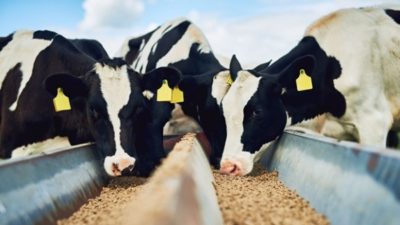2303425 FRONT ANI BIOTECH

| Course Number | 2303425 | |
|---|---|---|
| Course Credits | 3 (3-0-6) | |
| Course Abbrviation | FRONT ANI BIOTECH | |
| Course Title (TH) | เทคโนโลยีชีวภาพสัตว์ขั้นแนวหน้า | |
| Course Title (EN) | FRONTIERS IN ANIMAL BIOTECHNOLOGY | |
| Responsible Unit | Faculty of Science/ Biology | |
| Type of Course | International Course | |
| Semester | Intl 1st semester | |
| Academic Year | 2024 | |
| Course Coordinator | ||
| Measurement Method | ||
| Type of Course | Semester Course | |
| Course Condition | PRE 2303101 or 2303101 | |
| Course Status | Major elective course | |
| Instructors / staffs | ||
| Enrollment conditions | None | |
| Degree level | Bachelor | |
| Related curricular | Bachelor of Science in Biotechnology (2562) | |
| Bachelor of Science in Biotechnology (2567) | ||
| Course description (TH) | การปรับปรุงผลิตภัณฑ์จากสัตว์ เทคโนโลยีชีวภาพในการผลิตสัตว์ ความปลอดภัยและการประกันคุณภาพของผลิตภัณฑ์จากสัตว์ การประยุกต์ทางอุตสาหกรรมและเภสัชกรรม เทคโนโลยีชีวภาพสัตว์ที่เลี้ยงในฟาร์ม พันธุศาสตร์และการผสมพันธุ์สัตว์ โภชนาการสัตว์ การสืบพันธุ์ในสัตว์ การวินิจฉัยโรคและการพัฒนาวัคซีน วิศวกรรมเนื้อเยื่อ การอนุรักษ์พันธุ์สัตว์ |
|
| Course description (EN) | Improvement of animal products, biotechnology in animal production; safety and quality assurance of animal-based products, industrial and pharmaceutical applications, farm animal biotechnology; animal genetics and breeding; animal nutrition; animal reproduction; diagnosis of disease and vaccine development; tissue engineering; animal conservation. |
|
| Curriculum mapping | CU-1.1: Behavioral Objectives Possessing well-rounded knowledge | |
| CU-1.2: Possessing in-depth knowledge | ||
| CU-2.1: Being moral and ethical | ||
| CU-2.2: Having an awareness of etiquette | ||
| CU-3.1: Being able to think critically | ||
| CU-3.2: Being able to think creatively | ||
| CU-3.3: Having skills in problem solving | ||
| CU-4.1: Having professional skills | ||
| CU-4.2: Having communication skills | ||
| CU-4.3: Having skills in information technology | ||
| CU-4.4: Having mathematical and statistical skills | ||
| CU-4.5: Having management skills | ||
| CU-5.1: Having an inquiring mind | ||
| CU-5.2: Knowing how to learn | ||
| CU-5.3: Having leadership qualities | ||
| CU-5.4: Maintaining well-being | ||
| CU-5.5: Being community-minded and possessing social responsibility | ||
| CU-5.6: Sustaining Thainess in a globalized world | ||
| subPLO1.1 Explain biotechnology knowledge in practice. | ||
| / | subPLO1.2 Analyze biotechnology knowledge in practice. | |
| subPLO1.3 Apply biotechnology knowledge in practice. | ||
| / | PLO2 Employ biotechnology-related technology and scientific tools. | |
| PLO3 Communicate effectively in English within the Biotechnology field. | ||
| / | PLO4 Demonstrate behavior that aligns with ethical principles, moral values, and professional ethics. | |
| PLO5 Demonstrate social responsibility, courage, and creativity. | ||
| Course learning outcome (CLO) | 1. Describe basic approaches in research and development of animal biotechnology. | |
| 2. Explain and give examples of animal biotechnology applications in various fields. |
| # | Date | Time | Learning content | Instructor | CLO | Remark |
|---|---|---|---|---|---|---|
| 1 | 1. Course orientation and introduction to animal biotechnology | • | ||||
| 2 | 2. Essential molecular biology of animal biotechnology | • | ||||
| 3 | 2. Essential molecular biology of animal biotechnology | |||||
| 4 | 3. Ethics/ safety and quality assurance of animal-based production | |||||
| 5 | 4. Fit-firm and fighting disease | |||||
| 6 | 4. Fit-firm and fighting disease | |||||
| 7 | 4. Fit-firm and fighting disease | |||||
| 8 | 4. Fit-firm and fighting disease | |||||
| 9 | 4. Fit-firm and fighting disease | |||||
| 10 | 5. Future food and modern animal farming | |||||
| 11 | 5. Future food and modern animal farming | |||||
| 12 | 5. Future food and modern animal farming | |||||
| 13 | 6. Finding gems in biodiversity | |||||
| 14 | 6. Finding gems in biodiversity | |||||
| 15 | 7. From animal biotechnology to future sustainability | |||||
| 16 | Field trip |
| Teaching/learning media | Books, review papers, research articles, laboratory manual, lecture handout, computer aided teaching materials | ||
| Communication channels / LMS | |||
| Type | Channel identifier / URL | Remarks | |
| Learning Management System (LMS) | Microsoft Teams | ||
| myCourseVille | |||
| Assessment method | Level of assessment | Related CLO | Percentage |
| Assignment | 20 % | ||
| Mid-term examination | 40 % | ||
| Final examination | 40 % | ||
| Grading | Grading System | Letter Grad (A-F) | |
| Grading method | Norm-referenced Grading (อิงกลุ่ม) | ||
| Minimum Passing Level (MPL) | 50 | ||
| Reading list | |||
| Type | Title | Remarks | |
| Textbook | Abubakar, M., Saeed, A. and Kul, O. 2015. The Role of Biotechnology in Improvement of Livestock: Animal Health and Biotechnology. Heidelberg. | None | |
| Course evaluation | Course evaluation system | myCourseVille | |
| Details of improvement from previous evaluation | – | ||
| Course quality control | Responses to complaints / petitions from students | Directly to the instructor |
